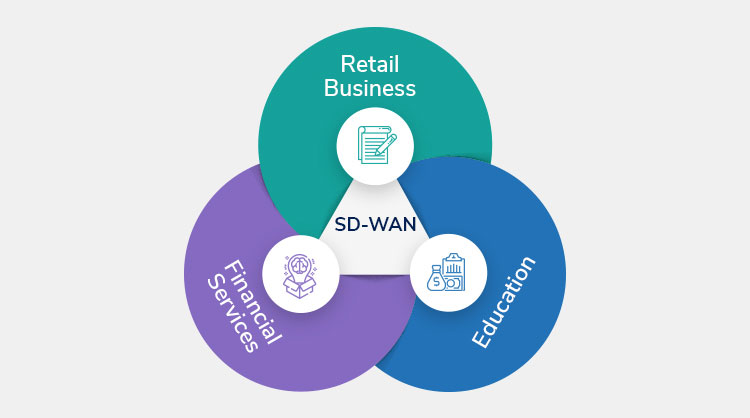What is SD-WAN?
The software-designed WAN (SD-WAN) is a specific application of Software-defined Networking (SDN) technology applied to WAN connections such as broadband internet, 4G, LTE, or MPLS. It connects enterprise networks – including branch offices and data centers – over large geographic distances.
The Importance of SD-WANs
Change is on the horizon, and businesses are looking for solutions to make their networks more flexible and responsive to their needs. Enterprise managers are often faced with the following challenges when it comes to managing IT infrastructure:
- Cost management of networks
- Lessening the complexity of networks
- Improve the performance of applications while increasing flexibility

Companies have faced operational challenges as they extend their reach over greater distances around the world. Some of the issues that they have faced as they expanded farther included data packet loss and network congestion. All modern applications such as streaming media, video teleconference calls, virtual apps, and VoIP calls require low latency.
Traditional WANs utilize MPLS (multiprotocol label switching), which sends data from one node to another. This technology is heavily reliant on terrestrial connections and underlying hardware in order to route information from the corporate headquarters to the branch offices. Users have often encountered high latency when attempting to use company appliances within the network. Configurations are also difficult as individual changes would have to be applied, and the changes themselves were often based off of templates that may not push through and affect the branch accordingly.

The importance of these issues cannot be understated, which is SD-WANs came into existence sometime in the early 2000s. It wasn’t until sometime around 2014 that SD-WANs started taking root in order to address these problems. The introduction of intelligence into these networks have given them a great degree of autonomy, allowing WANs to be scaled according to the organization’s needs at a much faster pace.
The Goal of SD-WANs and What They’re Used For
Enterprises have searched for a technical solution that is open, offers flexibility, and is cloud-based.
The software-designed WAN (SD-WAN) is a software-designed approach to managing wide area networks as the world transitions from hardware to software via cloud-based technology. The goal of the SD architecture is to make it easier to manage wide area networks, as organizations reported negative user experience due to high latency while improving network capabilities at the same time.
In previous years, companies had to deploy networks over vast distances to ensure that data centers and satellite offices were interconnected with one another. IP voice, data, and other services were heavily reliant on this configuration to conduct transactions. As technology and bandwidth boomed over the past few years, businesses and vendors are considering to rethink their strategy on how to deploy networks in different locations while accommodating demands.
WANs were often used to connect different branch offices or to a headquarters network, or to interface geographically separated data centers with each other. They often relied on proprietary hardware in order to route IP traffic to their intended destinations. Traditional routers that are nested within these WANs are not meant to be cloud-friendly, often necessitating the need to backhaul traffic.
The software-defined approach works by leveraging cloud-native network capability to establish and maintain a connection between a company HQ and its satellite offices. This separates the network completely from centralized hardware management and places management and monitoring functions in the hands of applications for easier administration.
As a result, traditional WAN networks and what have been standing practices for the past few decades were unable to keep pace with the most recent developments in cloud technology. This forced managers and staffs to completely rethink their approach on how to handle cloud-centric networks.
There are four known examples that the software-defined iteration works as:
Static SD-WAN
The static iteration of the SD architecture is meant to be a solution for workforce personnel that are working at remote locations. The static SD-WANs are meant to have devices integrated with one another regardless of location. That means that anywhere in the world, workers will have access to the resources they need in order to meet customer demands.
Hybrid SD-WAN
The hybrid SD architecture utilizes technologies from both SD and traditional WANs. They function by leveraging both broadband capabilities of the internet in concert with MPLS circuits dedicated to the traditional WAN architecture, thereby offering the best of both worlds.
Dynamic SD-WAN
An iteration of the software-defined approach which can dynamically route traffic across multiple carrier links in the network. Offers dynamic application-aware routing, delivering resiliency within the links themselves, which in turn offers less downtime.
NSX SD-WAN
NSX SD-WAN technology is an invention that is proprietary to VMWare’s partner VeloCloud. Cloud computing needs are done via the NSX data center, which handles all enterprise-level application needs.





